Breast Lift in Hong Kong
Search and Compare the Best Clinics and Doctors at the Lowest Prices for Breast Lift in Hong Kong
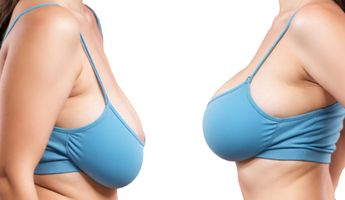
Find the best clinics for Breast Lift in Hong Kong
No clinics available
Czech Republic offers the best prices Worldwide
Price: $ 85

- Home
- Hong Kong
Compare Before & After Photos of _procedure_photos.phpBreast Lift
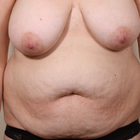
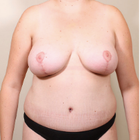
Front view
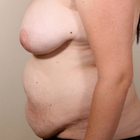
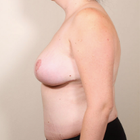
Full-side view

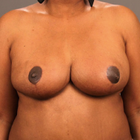
Front view
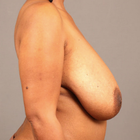
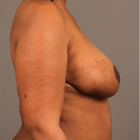
Full-side view
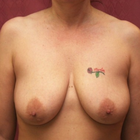
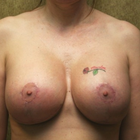
Front view
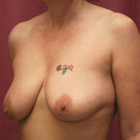

Half-side view
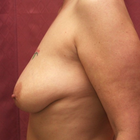
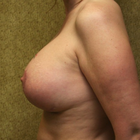
Full-side view
WHY US?
At Medijump, we're making medical easy. You can search, compare, discuss, and book your medical all in one place. We open the door to the best medical providers worldwide, saving you time and energy along the way, and it's all for FREE, no hidden fees, and no price markups guaranteed. So what are you waiting for?

Free

Best Price

Widest Selection

Risk-Free
What you need to know about Breast Lift in Hong Kong
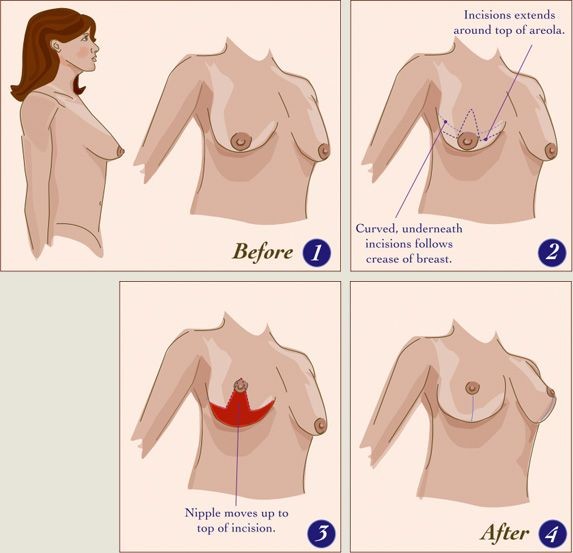
Commonly known as a Mastopexy, the breast lift is a surgical procedure to raise sagging breasts by modifying the contour and elevation. Breasts look saggy due to overstretched suspensory ligaments of cooper, excessive tissue, and skin. Lactation is also a cause of drooping breasts. During this procedure, a plastic surgeon removes excess skin and tighten the remaining tissue to create a more contoured and shapely breasts. Some patients may choose to have breast implants added as part of the procedure to give the breasts more volume.
After the surgery, you can expect to have round and elevated breasts. However, this surgery is not for everyone, you should talk to your doctor openly before opting for it. Your physical conditions and history are considered before going for surgery. Your surgeon will determine whether or not you are a good candidate for breast lift. For patients over the age of 40, a breast scan might be necessary.
A breast lift won't significantly change the size of your breasts. However, it can be performed in combination with breast augmentation or breast reduction.
What is the cost of Breast Lift in Hong Kong?
Due to a number of variables, including the complexity of the surgery, the surgeon's experience, and the location of the medical centre, the cost of the Breast Lift within Hong Kong may vary greatly. Typically, the anticipated cost might be hundreds of dollars.
However, it is important to emphasise that the cost should not come at the expense of the quality of healthcare, particularly when it comes to surgical procedures. For the greatest outcomes, it is advised to work with a reputed medical facility and communicate with a skilled surgeon.
What does a Breast Lift Procedure Involve?
A number of techniques are available for a breast lift. They differ in the location of incisions. The one suitable for you is chosen according to the condition of your breasts. The procedure begins with making you lay in the supine position. You are anesthetized, so that you may not suffer from pain during the surgery. After this, an incision is given around your areola descending down towards the crease where it runs horizontally. Stitches are given inside the breasts to suspend them. Excess tissue is removed. Sometimes, the size of your areola is decreased and nipples are shifted to a higher position. In most cases, the nipple-areola complex (NAC) is preserved to prevent damage to your lactational ability. After your surgeon removes exess skin, tissue, and fat, they put back the skin flap to its place and stitch the incision.
After the surgery, a bandage is applied over the operated area. You are then given a surgical bra to wear. Small tubes are placed near your incisions to drain any fluid or blood. These tubes are removed after several days.
How Long Should I Stay in Hong Kong for a Breast Lift Procedure?
Breast lift is a 2 to 3-hour procedure, after which you are moved from the operation theatre to a private recovery room. You are monitored for a few hours, and if everything goes fine you can go home on the same day, assuming no other surgeries were performed at the same time.
After being discharged from the hospital, you have to come for check-ups on a regular basis to ensure that nothing goes wrong. You should remain in Hong Kong for at least 7-10 days after the surgery. In this period, your incisions heal and stitches are removed. You can leave when told by your doctor.
What's the Recovery Time for Breast Lift Procedures in Hong Kong?
Plan to take 2 to 3 weeks off work for your breast lift surgery. There will be pain and swelling in the operated area and your breasts will appear swollen for almost 2 weeks. There will be redness and pain around your incisions. Your areola and nipple are likely to be numb for a few days.
In the early days, painkillers are given to help you with pain. You might have to wear surgical bras for 2 to 3 weeks, after which, you can wear regular bras. No underwire bras should be worn for at least 6 weeks.
What sort of Aftercare is Required for Breast Lift Procedures in Hong Kong?
Following points should be kept in mind to take care of yourself after being discharged from the hospital:
- Visit your doctor regularly for some time.
- Take your medicines as and when prescribed by the doctor.
- Follow a healthy diet plan for a better recovery.
- Ensure the presence of someone with you to look after you.
- Do not wear push up bras for 5 to 6 weeks after the surgery.
- Wear surgical bras in the early few days.
- Avoid excessive movement of your breasts.
- Do not take a bath as long as bandages are there. Wet bandages can be the cause of infection.
- Do not bend.
- Avoid sexual activity for at least 2 weeks.
- Do not lift heavy objects or kids. It can put stress on your stitches, removing them before due time.
What's the Success Rate of Breast Lift Procedures in Hong Kong?
According to a survey, 80% of women are satisfied by breast lift surgery. Their bust is restored, and sagginess disappeared. Most people experience long-lasting results, while others might need minor revisions after a few years.
For an in-depth analysis of the Breast Lift procedure with before and after images, watch this short video.
Are there Alternatives to Breast Lift Procedures in Hong Kong?
The following are some non-surgical alternatives to breast lift surgery:
- Padded bras: padded bras or push up bras give a rounded contour to your breasts without incisions. Bras lift your breasts up eliminating the droopy appearance. However, this is not a permanent method.
- Vampire breast lift: in this procedure, platelet-rich plasma (PRP) injections are given which restore your bust. This is a 20-minute procedure in which a numbing cream is applied onto your breasts. After they go numb, PRP along with hyaluronic acid is injected into your breasts. It tightens your breasts and lifts them up. Hyaluronic acid increases the efficacy of PRP.
- Laser treatment: high power laser is used to stimulate the growth of collagen. It only targets the outer layers of skin. Hence, rejuvenating the skin only.
- Caci bust treatment: a device releasing electrical impulses is moved over your breasts. It hydrates your skin and gives strength to the tissue. Improving the contour of your breasts.
- Botox: These injections are given into your chest muscles. As a result, these muscles relax. To compensate for these muscles, your back muscles contract, lifting your breasts higher. This can last for 3 to 4 months.
- Thermage: in this procedure, radio waves are used to tighten the skin of your bust. Production of collagen is stimulated which lifts the skin of your droopy breasts.
- Chest exercises: you can do different chest exercises to strengthen your chest muscles. It tightens the skin and raises your breasts. It is more effective if performed under the supervision of an instructor.
What Should You Expect Before and After the Procedure
The preliminary phase before the Breast Lift generally requires an exhaustive health evaluation, which includes a mammogram and the measurement of your breasts. The medical facility will recommend you to avoid drugs that could escalate the risk of bleeding, for instance, Aspirin. They may also request that you refrain from smoking since nicotine can hinder the recovery process.
Post Breast Lift, you are likely to be required to wear a healing bandage or post-surgical bra to reduce swelling and provide support to your breasts during the healing phase. It is possible that a slender tube may be inserted to eliminate any surplus blood or fluid. Normal post-procedure discomforts include pain, bruises, and swelling that can be effectively handled with prescribed pain medication. The medical facilities will issue comprehensive instructions regarding wound maintenance, medicine, and consequent appointments. Participating in arduous activities is advised against for approximately six weeks after the surgery.
Do note that personal experiences with the Breast Lift can vary slightly. The duration of the healing process and the ultimate outcome heavily rely on personal health conditions, lifestyle practices, and compliance with instructions after the operation.
What are Potential Risks of Breast Lift?
There are, however, risks and side effects you need to be aware of. Some of these risks include:
- Infection
- Bleeding
- Scarring
In rare cases, the surgery might not be successful. Failed surgeries leave marks on your breasts which can be subjected to hypertrophy. Also, there might be a difference in the shape of both breasts. In these cases, revisional breast lift surgery is performed
Whilst the information presented here has been accurately sourced and verified by a medical professional for its accuracy, it is still advised to consult with your doctor before pursuing a medical treatment at one of the listed medical providers
No Time?
Tell us what you're looking for and we'll reachout to the top clinics all at once
Enquire Now

Popular Procedures in Hong Kong
Prices Start From $208

Prices Start From $89

Prices Start From $931

Prices Start From $76

Recommended Medical Centers in Hong Kong for procedures similar to Breast Lift

- Interpreter services
- Translation service
- Religious facilities
- Medical records transfer
- Medical travel insurance
- Health insurance coordination
- TV in the room
- Safe in the room
- Phone in the room
- Private rooms for patients available

- Interpreter services
- Translation service
- Religious facilities
- Medical records transfer
- Medical travel insurance
- Health insurance coordination
- TV in the room
- Safe in the room
- Phone in the room
- Private rooms for patients available

- Interpreter services
- Translation service
- Religious facilities
- Medical records transfer
- Medical travel insurance
- Health insurance coordination
- TV in the room
- Safe in the room
- Phone in the room
- Private rooms for patients available

- Interpreter services
- Translation service
- Religious facilities
- Medical records transfer
- Medical travel insurance
- Health insurance coordination
- TV in the room
- Safe in the room
- Phone in the room
- Private rooms for patients available
Breast Lift in and around Hong Kong
About Hong Kong
The former British colony became a special administrative region of China in 1997, when Britain's 99-year lease of the New Territories, north of Hong Kong Island, expired. Hong Kong is governed under the principle of "one country, two systems", under which China has agreed to give the region a high degree of autonomy and to preserve its economic and social systems for 50 years from the date of the handover.
Hong Kong welcomes an ever-increasing number of medical tourists each year, many of which travel for Breast Lift procedures. Hong Kong is a well-established hub for medical tourism, although it is better known for its quality and cutting-edge procedures than for cost.
Popular Parts of Hong Kong
Hong Kong is a blend of a dynamic cultural landscape with an astonishing skyline, glamorous shopping, as well as one of the world’s top culinary destinations.
- Victoria Peak (The Peak) offers the best view of Hong Kong’s modern skyline. It is the highest point on Hong Kong Island and the most visited spots by tourists. You can ride the tram to the top where you will find the Peak Tower and Peak Galleria. The peak is covered by a large park filled with incredible greenery.
- Big Buddha (Tian Tan Buddha Statue) is located in Lantau Island. It is one of the largest Buddha statues and took 12 years to complete. It is the perfect place for tourists who wish to get away from the hustle and bustle of the city. Surrounded by forest and ocean, the statue gives an incredible view. The best way to reach the Buddha is by riding the Ngong Ping Cable car which will take you on a spectacular ride over the forest.
- Wong Tai Sin Temple is one of the most popular temples in Hong Kong. It was named after the famous monk of yore, Wong Tai Sin. It is said that he has the ability to punish evils, heal the wounded, rescue the dying, and grant whatever is requested. The temple is also known as Sik Sik Yuen and has a traditional Chinese temple style.
- Temple Street Night Market is the best night market for tourists. Starting at 6.00 pm, it is the place to go if you want to taste Hong Kong’s street food. You can also find vendors selling gadgets, trinkets, clothing, household goods, jewelry, and traditional Chinese crafts. The place is brimming with atmosphere and it has served as the backdrop to many movies.
- Hong Kong Disneyland is a wonderful world for any Disney lovers. The park is divided into seven lands: Adventureland, Grizzly Gulch, Main Street, Mystic Point, Fantasy Land, Toy Story Land, and Tomorrowland. Here, you will find various adventures, parades, and musicals. In the evening, you can watch the fireworks over the castle.
- Star Ferry is a beloved icon of the city. It is said that your visit to Hong Kong will never be complete without cruising on the famous ferry. You can see the sparkling landscape of the city while enjoying the refreshing breeze.
Weather and Climate in Hong Kong
Hong Kong’s weather is influenced by the monsoon subtropical climate. The temperature is mostly mild all year round. May to September are the warmest months with an average temperature of 33 °C while mid-December to February are the coldest months with the temperature falling to 10 °C. Spring starts from March and ends in early May and the weather during this season is pleasant with many sunny days, but you can also have foggy, rainy, and stormy days.
The summer in Hong Kong is hot and humid with a perpetual threat of rain showers, thunderstorms, and sometimes even typhoons. Summer lasts for around four months from May to September. With August as the wettest month in the city.
The best time to visit Hong Kong is in the autumn, starting from October to early December when the days are generally sunny and the temperatures range from 22 °C to 28 °C. Winter is the holiday season in the city and the average temperature is around 16 °C to 18 °C but it can drop under 10 °C.
Getting Around in Hong Kong
The main gateway to Hong Kong is the Hong Kong International Airport. The airport is built on reclaimed land on the island of Chek Lap Kok and it serves international destinations to almost every major city in the world, including, Dubai, Amsterdam, Seoul, Canada, Singapore, and Sydney. For affordable travel, budget airlines such as AirAsia, Eastar Jet, and IndiGo are available. There are a wide variety of public transport services to and from the airport. The best options are Airport Express, public buses, and taxis.
To get around Hong Kong, it is best to purchase Tourist Day Tickets which gives you unlimited access to the main MTR and certain Rail lines for HK$65. If you are planning to stay longer in the city, the Octopus Card will be a big help. The card is reusable and can be used for almost every public transportation mode and you can buy the card for HK$150.
One of the fastest and easiest ways to get around the city is by the MTR (Mass Transit Railways) and it is one of the most advanced metro systems on the planet. The MTR operates 11 lines from 06.00 am to 01.00 am. The fare ranges from HK$3.6 to HK$52.6 depending on the distance.
The public bus is a great way to explore Hong Kong, especially the south side of the island and the New Territories. Most buses are double-decker and air-conditioned and it is an affordable way to get around the city and the fares will vary based on the distance traveled. Other public transportation modes such as tram and ferry are also available.
If you need a more flexible way of travel, taxis are easy to find and offer excellent value. There are three types of taxis, the red taxis operate throughout the city except for Lantau Island and the fares start at HK$24. The green taxis only operate in the New Territories and the fares start at HK$20.50. The blue taxis serve Lantau Island and the fares start at HK$19.
Tourist Visas in Hong Kong
Citizens of around 170 countries and territories may visit and stay in Hong Kong without a visa for up to 180 days. Other countries not listed in the visa-free entry such as Albania, Armenia, and Cambodia need to apply and obtain a visa before entering the country. All visitors must have a passport valid for at least one to six months beyond the date of entry to Hong Kong. Visitors can apply for a visa from their nearest Chinese embassy or consulate.
Additional Information
- Local Currency: The official currency is the Hong Kong Dollar. US$1 converts to HK$7.78.
- Money & Payments: Tourists can find ATMs almost everywhere, and most ATMs are linked up to international money systems such as Maestro, Cirrus, and Visa Electron. Credit cards are widely accepted. Tipping is generally not expected and restaurants usually add 10% to 15% service charge to your bill.
- Local Language: Most people in Hong Kong speak Chinese (Cantonese and Mandarin). However, English is also widely spoken since it is one of the government official languages.
- Local Culture and Religion: Many people in Hong Kong either follow Buddhism, Confucianism, or Taoism. Christianity is also one of the major religions in the city. Other religions such as Islam, Sikhism, Hinduism, Judaism, and the Bahá'í Faith are also freely practiced.
- Public Holidays: Hong Kong celebrates major religious holidays such as Lunar New Year, Ching Ming Festival, and Christmas.
Popular Searches
- Plastic Surgery in Thailand
- Dental Implants in Thailand
- Hair Transplant in Thailand
- Breast Augmentation Thailand
- Gastric Sleeve in Thailand
- Gender Reassignment Surgery in Thailand
- Laser Hair Removal in Bangkok
- Botox in Bangkok
- Dermatology in Bangkok
- Breast Augmentation in Bangkok
- Coolsculpting in Bangkok
- Veneers in Turkey
- Hair Transplant in Turkey
- Rhinoplasty in Turkey
- Stem Cell Therapy in Mexico
- Rhinoplasty in Mexico
- Liposuction in Mexico
- Coolsculpting in Tijuana
- Rhinoplasty in Korea
- Scar Removal in Korea
- Gastric Sleeve in Turkey
- Bone Marrow Transplant in India
- Invisalign in Malaysia
- Plastic Surgery in the Dominican Republic
- Tummy Tuck in the Dominican Republic
- Plastic and Cosmetic Surgery in Poland
- Rhinoplasty in Poland
- Hair Implant in Poland
- Dental Implants in Poland
- IVF in Turkey